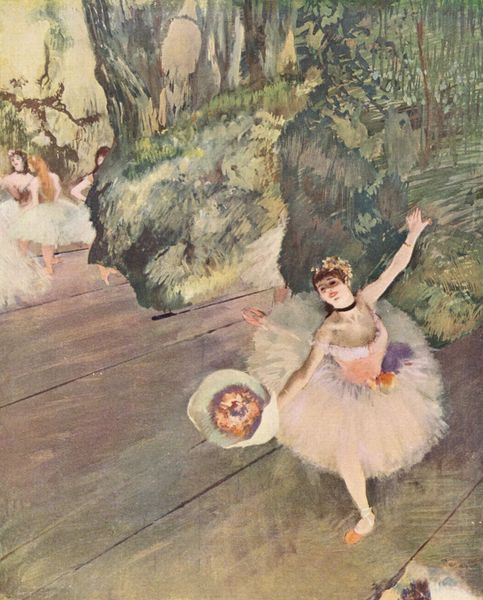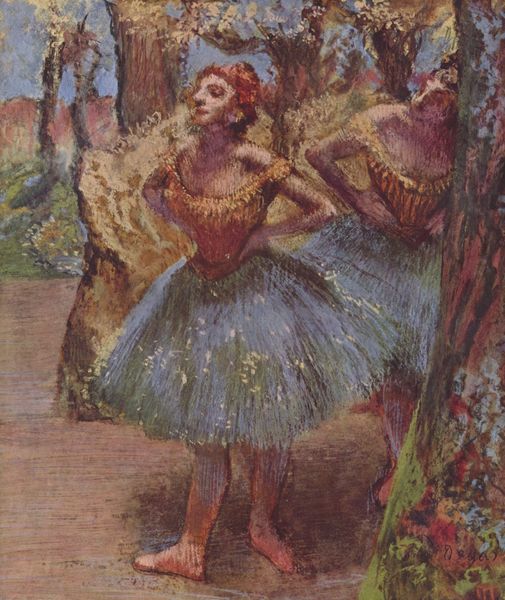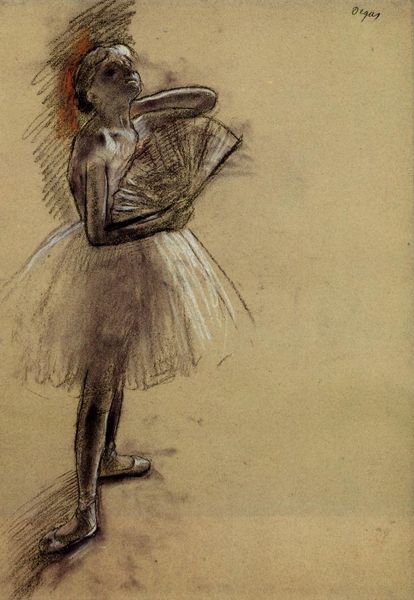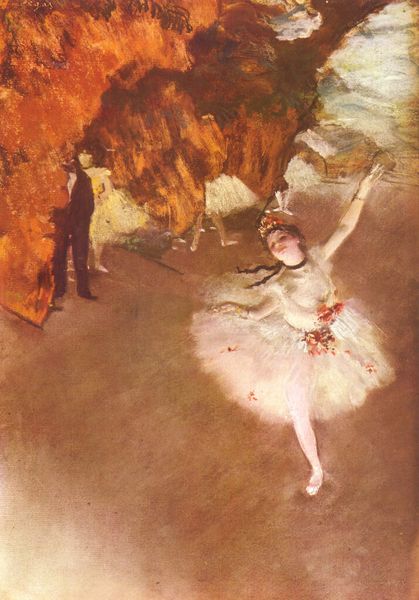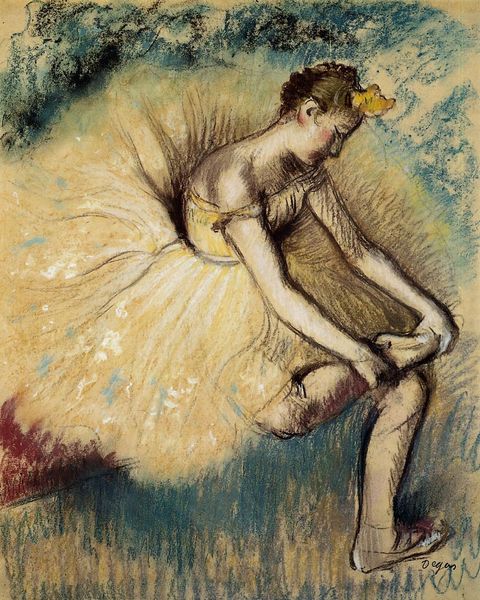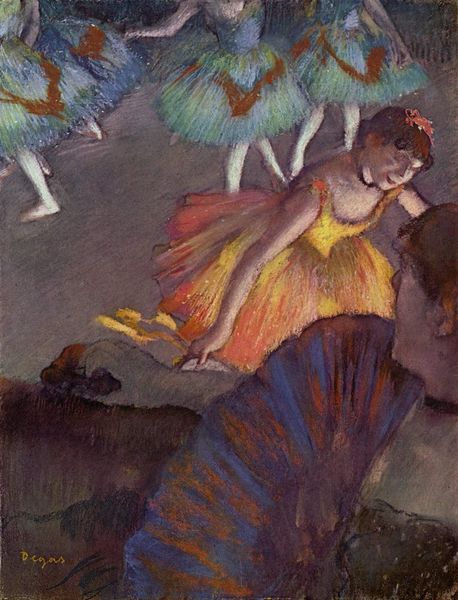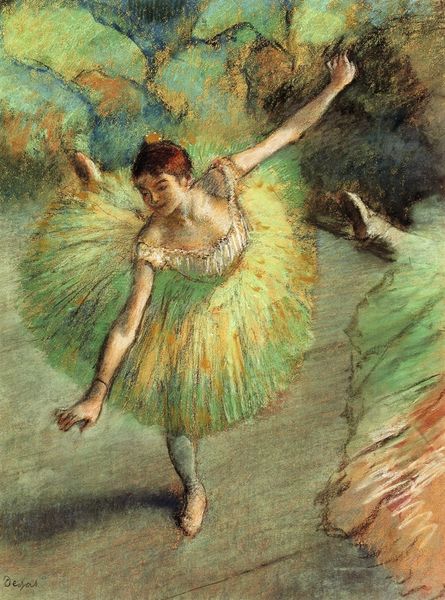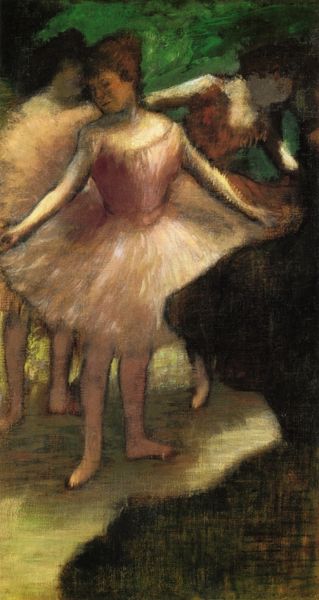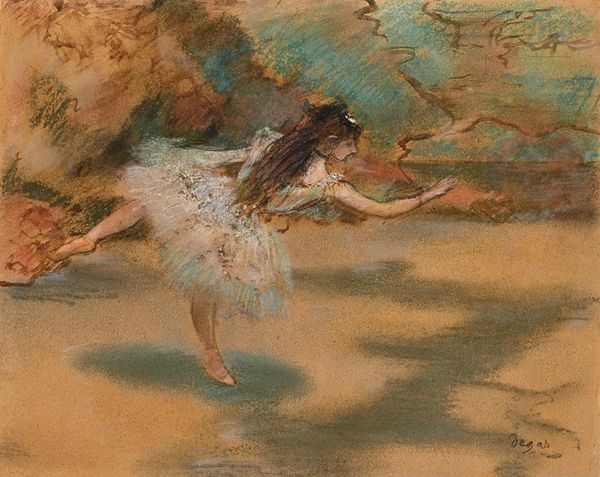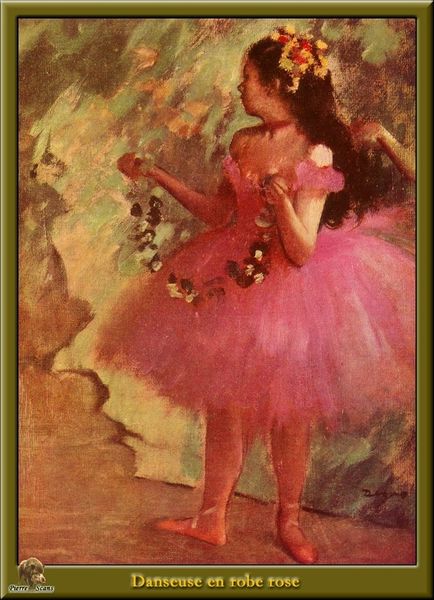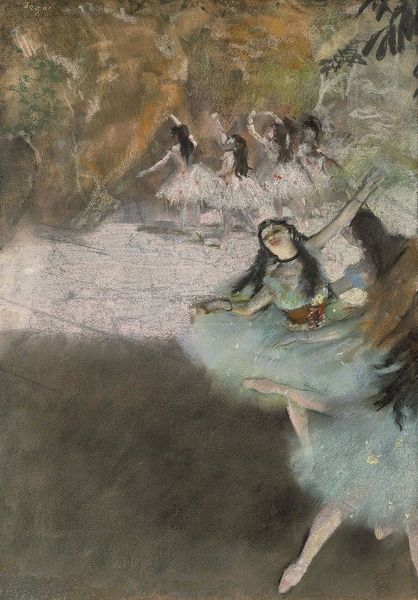
painting, oil-paint
#
portrait
#
painting
#
impressionism
#
oil-paint
#
figuration
#
oil painting
#
intimism
#
genre-painting
#
watercolor
Dimensions: 67 x 38 cm
Copyright: Public domain
Editor: This is "Dancer with Bouquet" by Edgar Degas, painted in 1876. It's an oil painting housed at the Musée d'Orsay. The first thing that strikes me is the contrast between the central figure, so vividly rendered, and the almost dreamlike quality of the dancers in the background. How do you interpret this work, with all its layers? Curator: Well, for me, the bouquet is the key. Consider flowers: gifts, accolades, and the ephemerality of performance itself. This dancer isn't just an individual; she embodies the entire ballet, past and present. Editor: Interesting. The flowers as a symbol of ephemeral performance—a sort of material memory. Curator: Precisely! Degas wasn't just capturing a moment. Notice how the blurred background evokes the collective effort and traditions that shaped this dancer's skill. The painting echoes the emotional and cultural weight of generations devoted to dance. How does the visual language itself reinforce that concept for you? Editor: I see it in the muted colors and hazy brushstrokes surrounding her. It's like a memory fading at the edges. I’m starting to view this less as a portrait and more as an archive. Curator: Indeed. These aren’t simple depictions, they are powerful visual embodiments of enduring artistic dedication. We see this visual encoding in other works across time as well, can you think of similar examples? Editor: Thinking about ritual and the repeated gestures encoded in symbols—this helps connect it to something larger than just the individual dancer. Curator: Yes, and in looking beyond the purely aesthetic, we touch on what connects us through art and across generations.
Comments
No comments
Be the first to comment and join the conversation on the ultimate creative platform.

